When comic books began, they were for children at home and soldiers at the front. For the first group they were aspirational, for the second group they were escape. As such the center of the stories was a young man free to act. Family was restricted to wards who were partners to the hero (Robin, Sandy, Bucky, and Toro) and parents and mentors who were in danger or dead (Batman and Wildcat).
As years progressed, so did the age of readers. The soldiers went back to civilian life, the kids grew up and, skipping a generation, their kids took to comics, too. In other words, the soldiers gave birth to kids of the fifties who weren’t interested in superheroes. Their younger brothers gave birth to the kids who were children in the early sixties and they took to superheroes like ducks to water.
Even if there had been no Earth-1 and Earth-2, there would have been a necessity for legacy. Superheroes would have children, themselves. At least some would join the Phantom, whose entire story is based on legacy.
Legacy wasn’t a new thing. Superhero legacy – descendants – predated superheroes. Before Superman, radio was broadcasting the adventures of a masked man who fought crime that had taken his family. The Lone Ranger was conceived in Detroit as a radio show and its home station was WXYZ from first broadcast in 1933.
Bad
Good
The Lone Ranger was probably inspired by Texas Ranger Captain John Hughes, to whom Zane Grey dedicated his 1915 book, The Lone Star Ranger. In real life, Hughes worked for years to catch the men who ambushed and killed Texas Ranger Captain Frank Jones. Hughes spent time in what was then Indian Territory and is now probably a shopping complex. He got to know and absorbed the culture and skills of the Choktaw, Osage, and Comanche tribes. If he’d worn a mask he would have been a real-life superhero.
In complete distinction, John Reid was a Texas Ranger who was a member of a party of six rangers who were ambushed and killed. His own brother, Dan Reid, was killed. John survived but was injured. Fortunately an old friend who was a Native American, Tonto, found him and nursed him to health without being Johnny Depp (seriously, on TV in the fifties the part was played by Jay Silverheels, who was a Mohawk).
John made a mask from Dan’s vest. He became the Lone Ranger because he was the lone survivor of Butch Cassidy’s ambush. He in fact became a cultural icon and spread from radio show to movie serial to books to television to comic books and movies. In fact, Dynamite Entertainment is still producing Lone Ranger stories.
The Lone Ranger’s brother had a son, Dan Reid Jr. Dan joined his uncle and became a kind of sidekick. When the success of the Lone Ranger meant WXYZ would try other ideas, they decided Dan had a son and in the 1930s that son, Britt Reid, becomes the Green Hornet. So the Green Hornet was legacy of the Lone Ranger, his grandnephew, in fact.
The Green Hornet kept some of the elements of the Lone Ranger, but wasn’t put into quite the same role model category. The Lone Ranger would never drink alcohol (in the radio show he never goes into saloons, he usually goes into cafes, where food rather than drink is served). He never shot to kill, only to disarm. His famous silver bullets were silver to remind him life was precious.
The Green Hornet pretended to be a criminal to infiltrate criminal gangs. Like the Lone Ranger, the Green Hornet had a sidekick who often drew on the lore of his own people. Kato was Japanese (except during World War II). Note that the Green Hornet uses a gas gun to disable, not to kill his opponents.
The Newest Green Hornet – Good pretends to be Bad, which is Really Good
Like the Lone Ranger, the Green Hornet moved from radio to movie serial to books to television to comic books and movies. In fact, Dynamite Entertainment is still producing Green Hornet stories today as well. Both heroes were turned into movies by people who couldn’t take the story seriously, both movies were made as comedies, and both movies bombed.
Since the Green Hornet started in 1936, the idea of superhero legacy can be traced to that time at latest. It would appear again and again. The Phantom doesn’t exist without it. It permeates Superman and Batman. It was always a fundamental part of the Fantastic Four. And it has even been extended to the originals.
The Lone Ranger has always been kept as a period piece. I’m not sure why, the Texas Rangers are still there, a kind of Mounties of Texas. They can still arrest (and if necessary, shoot) you. But the Lone Ranger never followed the Vigilante into modern times.
Not so the Green Hornet. Originally a grown man in the 1930s, the Green Hornet dealt with still current urban problems like crime and corruption. So he has remained an adult and filtered through the eras.
In the 1960s a TV series was created, the most famous element of which was Bruce Lee as Kato. In the series Kato was still a valet, though that role was thirty years out of date, but Bruce Lee played the part with an assured casualness. He lounged on his employer’s desk and talked to house guests as an equal. But the series did not go over. Batman was still dominant and people expected comedy.
Dynamite Entertainment took up the Green Hornet and brought it forward. Now the Green Hornet is Britt Reid Jr, the son of the original. Kato is Mulan Kato, the daughter of the original. So the great-great nephew of the Lone Ranger, son of the Green Hornet, maintains the legacy. They also maintain the mood, which is good.
Other heroes have legacies, but they’re very different. The early heroes like Green Hornet and Phantom seem to have functional families. That’s more than you can say for most comic-book families.
Start with Wildcat. Ted Grant was a boxer accused of fixing a fight not by the usual method of telling a guy to go down. Some fixers put a needle in his glove and misjudged the dose his opponent should take. Why “Socker” Smith wouldn’t wake up and say say, “I knew something stabbed me, look at that injection mark,” I have no idea. But Smith died, and Ted Grant got away when the police arresting him were shot. He created the Wildcat costume because police would pick up Ted Grant but ignore a guy in body-long hosiery and a mask. But he did prove he was innocent.
He became a second-string hero who has had a legacy twice (three, actually, but one died almost as soon as he put on the costume). First came Yolanda Montez, who was his goddaughter. She way born with the metahuman power of extending her finger and toenails and had cat-like agility. (It’s lucky she had the last power or she would have been Meg Griffin when the Family Guy family all got superpowers.) While Wildcat was injured (it’s Crisis, so it happened, but it happened differently, well, no, it never happened, stop mentioning it), Montez took over.
She fights crime, joins Infinity Inc, and is eventually killed. That allows the third (OK, fourth) Wildcat to start up and nobody mentions Montez again. In comics, if you die you are either completely forgotten or you come back.
Tom Bronson is the natural son of Ted Grant. However, Ted never knew about his son, something that causes him grief now (personally, I think he owes the kid 18 years of birthday and Christmas presents, due right away). Tom’s mother was remarkable not only for passing on a metahuman gene but by getting pregnant to a celebrity and keeping her mouth shut even though she gets no alimony or child support.
The Pose Tells You Who is Head of the Clan
Nonetheless, Tom Bronson can change into a panther-like humanoid and back at will. This is useful because it keeps him in the superhero mix and close to his dad. Despite the lack of background, Ted tries to be a father to Tom. He gives the greatest gift he has, the name Wildcat. His explanation is simple, there’s two flashes, a whole bunch of Green Lanterns, there can be two Wildcats.
And since then, there has been. But the commercial vehicles they had in the JSA have fallen by the wayside. An interesting story is ignored.
In contrast, let’s look at Al Pratt, the original Atom. The Atom started out a guy who was 5’1”, but surprisingly strong for his size because he worked out a lot. It’s said he may have been inspired by a Coney Island strongman named Joe Greenstein, who was called the Mighty Atom.
Basically, the Atom’s story was he would be underestimated because of his height and would then beat people up because of his strength. Obviously, bad guys didn’t notice the muscles. However, history changed him. The atomic bomb went off, “atom” was a brand word to have, and the Atom got atomic powers in super strength and an energy-infused punch. Then came the Dark Ages and when the Atom was revived it was as the much more atomic Atom of Ray Palmer.
But legacy applies to Al. He has a godson, Al Rothstein. The younger Al is originally called Nuklon and later Atom-Smasher. He is the grandson of a supervillain, Cyclotron, from whom both he and the Atom got their powers. Atom-Smasher has super-strength, speed, could become intangible, and grow to 60′ in height, further increasing his strength.
Al Pratt also had a son he didn’t know about. Grant Emerson was taken by Vandal Savage and given superpowers because, well, what else would you do? So Grant was essentially grown when his father found out about him. Grant became the superhero, Damage. Damage can use atomic energy to increase his strength, speed, and durability to early pre-flying Superman levels. If he doesn’t use his atomic energy this way he has to discharge it. Eventually, Damage is killed.
So, really, Ted Grant and Al Pratt, Wildcat and the Atom, have the same legacy story. Hey each have a godchild and a child whom they don’t know about until that child was basically grown. Each child is a parallel to their latest superhero version of their parent. Neither Pratt’s godson nor son reflects his “pre-atomic” weightlifter phase.
More than that, the various legacies get hairy, become even stronger and grow, or have energy which must be discharged. In other words, each seems to be a disguised attribute of adolescence. Legacies sometimes suffer a kind of sidekick’s disease. This is a shame.
Legacy is normally the male line. Legacy children of superheroines are much rarer, and Fury, child of Earth-2’s Wonder Woman, and Fury’s daughter, also called Fury, are rare and positive examples. There are a few who are legacies on both sides, in particular the Huntress, Obsidian, and Jade. These are largely the most successful of the legacies, particularly the daughter of Batman and Catwoman. But we’ll come back to her.
The final case is a legacy of both parents of Hector Hall, the son of Earth-2 Carter (Hawkman) and Sheira (Hawkgirl) Hall. I give his real name because he changed his superhero title twice. Remember that the Earth-2 hawkcouple were reincarnated Egyptians. They were cursed into reincarnation to keep them suffering and apart. For some reason this curse included a clause about children so one-night stands were a possibility from day one.
First Try
Try Again
Never Mind, Just Kill Him
Hector resented the time the couple spent with their (surprise) godson. Why Pagans would have a godson, I don’t know. But they did and Hector resented Norda Cantrell, who became Northwind.
Hector created a full suit of armor out of Nth metal, which his parents used in their wings to fly. He called himself Silver Scarab. Sucked into his parents’ curse, Hector escaped death by entering the Dreaming and becoming the inter-dimensional Sandman. That role degenerated and Hector took on the role of Dr Fate until he was killed. Since Dr Fate (Nabu) also had an Egyptian origin, this made sense and could have centered a deep story of legacy. As Dr Fate, Hector Hall might have seen the curse and all its ramifications from him, his parents, and the world.
Instead he did an echo of his parents, searching for his wife (Fury). It becomes too much like Galactus: every additional appearance lessens the impact. In this case, Hector and Lyta Hall have a son, Daniel Hall. It is their son who pulls them both back into the Dreaming when their physical bodies die.
Too often the legacy is used as a substitute death for the parent and only has an identity that exists as an adjunct of the parent. Again, it’s cutting down the legacy. When that isn’t done, legacies can do great. Look at Huntress, the daughter of Batman and Catwoman on Earth-2. Because her parents were dead they couldn’t overshadow her, but they could motivate her. They became one of the strengths of the character. More, she got her own costumed identity: she’s Huntress, not Batwoman, not Catgirl, not Batcat. None of that.
DC had that great legacy until it closed down the JSA. They had Hourman, son of Hourman, and Jessie Quick/Liberty Belle, daughter of Johnny Quick and Liberty Belle. Part of the appeal was them as a married couple. If you can find these two in old JSA issues, grab them. DC, revive them. They worked.
Again, the best legacies exist in their own right. Look at the Green Hornet. He was a legacy, and is now the legacy of a legacy. But the Lone Ranger is out of the way and the Green Hornet gets his own identity. Then the new Green Hornet comes along, springing from his father but doing his own work. And Kato? Change of gender helps emphasize the change in generations. Dynamite has thought through the legacy issue. More than that, they’ve approached it as if they want a new open-ended series. They want the Green Hornet to keep selling forever.

![LoneRangerTonto[1].r](http://www.blastoffcomics.com/wp-content/uploads/2014/01/LoneRangerTonto1.r-300x157.jpg)
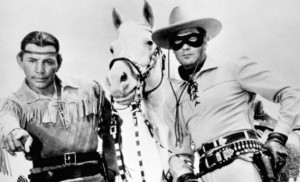
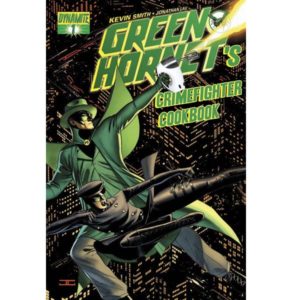
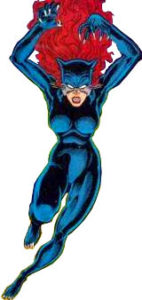
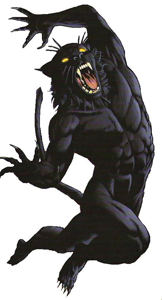
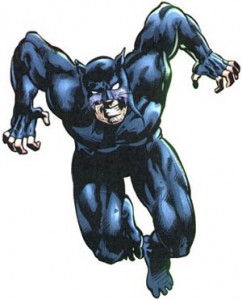
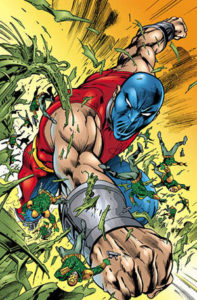
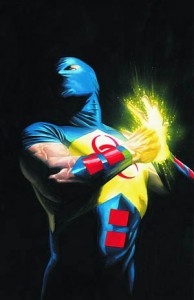
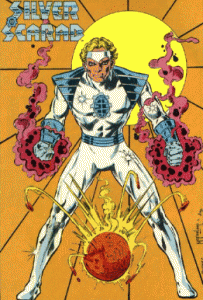
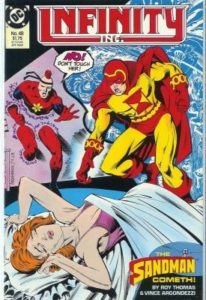
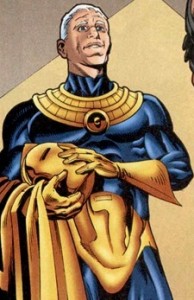
Comments are closed.